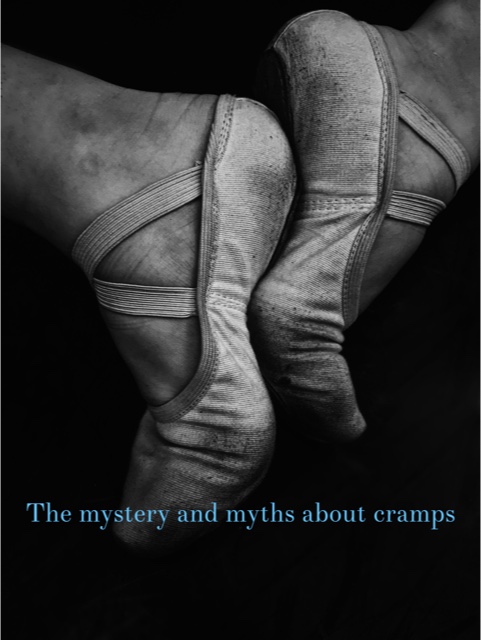
Many myths surround the how and why we get sudden cramps.
You’re not alone in jumping in the night because of one. Muscle cramps happen suddenly and often excruciatingly, leaving a palpable knotting of the muscle. They can happen to anyone, with or without a history of nervous or metabolic disorders. Cramps can occur during sleep, strenuous activity, or pregnancy. It’s not clearly understood why we get these sudden cramps, but research shows that the likely causes of these types of cramps are multifactorial and caused by changes in the neuromuscular system. One hypothesis is that nerves malfunction. Overly excited muscle neurons go a little haywire in a feedback loop either from the receptors in the muscle, or spinal nerve pathways.
Other causes of cramping are straining or overusing a muscle, or not enough blood getting to the muscle. Sometimes this malfunction is related to metabolic disorders, or a health problem such as a spinal cord injury, medications, or a pinched nerve in the neck or back.
But still, many myths surround the how or why. Regarding exercise- associated muscle cramping, 92% of athletic trainers and most people believe that dehydration or electrolyte imbalance is the cause. Or, perhaps eating more bananas is the answer? If you have a family history of cramping, it’s a good idea to consult your doctor for any possible calcium or potassium supplement recommendations. If you are healthy, there are few well-designed experimental studies supporting dehydration or electrolyte imbalances. First, the best immediate response for cramps is gently stretching the taut muscle. It’s been argued that since static stretching quickly relieves cramping, then how could it be that dehydration is the problem, as no liquids or electrolytes are added to the body with simple stretching. Second, cramp- prone athletes often drink more fluid than athletes without a history of exercise- associated muscle- cramping, ( EAMC ) and it’s found that even when sport drink consumption matched sweat loss, EAMC still happened 70 % of the time. The most interesting argument against dehydration being the culprit is that dehydration affects the whole body, not just the calves, quads or hamstrings, the muscles that are more prone to cramping.
Myths 2 and 3 : Sports drinks and bananas for electrolytes.
If you’re active, you need to drink plenty of water to avoid dehydration. But you don’t want to overdo it, whether you are simply gardening, or playing two and a half hours of tennis. If you did play tennis, or any other sport for that amount of time, you would need the equivalent of approximately six and half teaspoons of salt replaced. Keep in mind that a typical sports drink contains only 0.44g/L of sodium. That would mean you’d be drinking gallons of fluids, which can be deadly. It’s not uncommon, sadly, that sports enthusiasts and athletes can die from water intoxication, called hyponatraemia. Rather than relying on sports drinks, it’s important to replace electrolytes at meals. Drink enough water throughout the day. As we age, we sometimes forget to drink enough because the thirst impulse becomes weaker.
Another myth about cramping is to reach for a banana, as the potassium in bananas can relieve cramping. Bananas are a healthy snack, but it takes at least 30 minutes to see an increase in new potassium ions in the blood after eating one. So far, there isn’t any evidence that eating bananas effectively prevent or treats EAMCs.
Because immediately stretching a cramp helps it subside, another factor may be in play. Tiny fibers, myofilaments, in muscle may overlap each other when muscles are already tight, and can bunch up even more, resulting in a sudden cramp. I’ve often experienced hamstring cramps going into an advanced yoga lunge if I haven’t previously stretched them enough beforehand. Though the cause of muscle cramps is still a bit elusive, recent evidence suggests that muscle overload is a factor. Stretching still appears to the the best treatment for those sudden cramps.
Click on the link for an effective calf stretch . https://vimeo.com/230657677
Published in the Idaho Mountain Express August 25, 2017.
